I have been twice in Maasai Mara Reserve in Kenya, staying both times at Melting Pot Safari, a camp with guides trained for photographers. The daily safari routine is quite straight forward: you wake up before sunrise, grab a quick snack, get in the car and drive up to the ridgeline to capture the sunrise. Then you spend the morning driving around, observing wildlife and you come back to the camp at lunch time. Which is also when the sun is the hardest and most animals are sleeping. You have another game-drive later in the afternoon until sunset.
Usually, you get the chance to have one full-day game drive during your stay: you leave the camp early morning and come back only at the end of the day. It is quite tiring for the driver but it enables you to go a bit further.
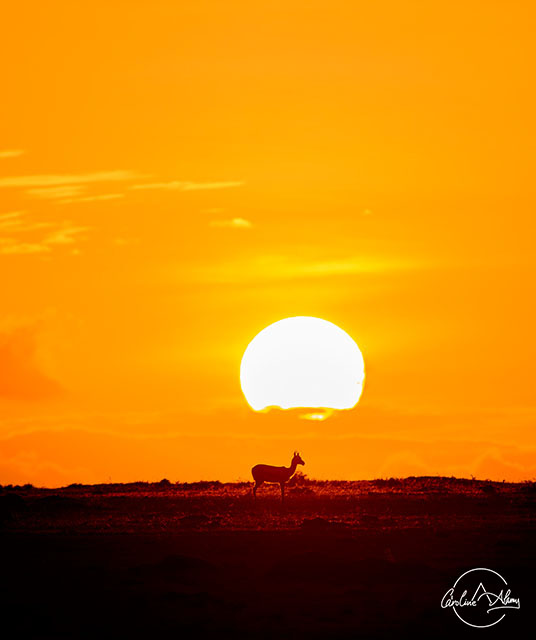
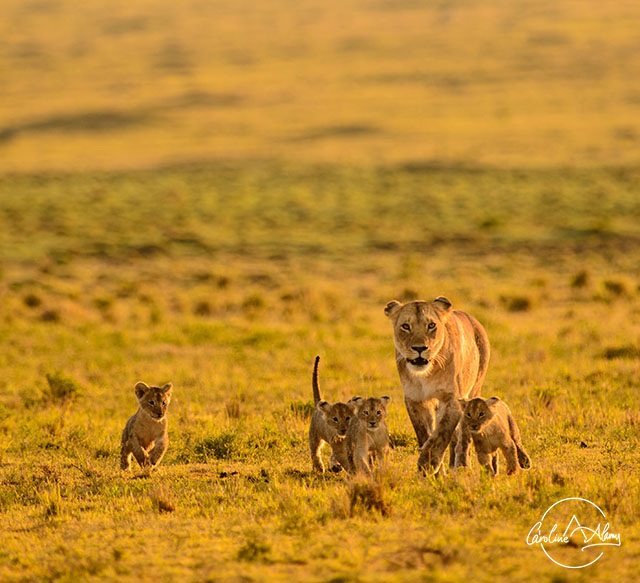
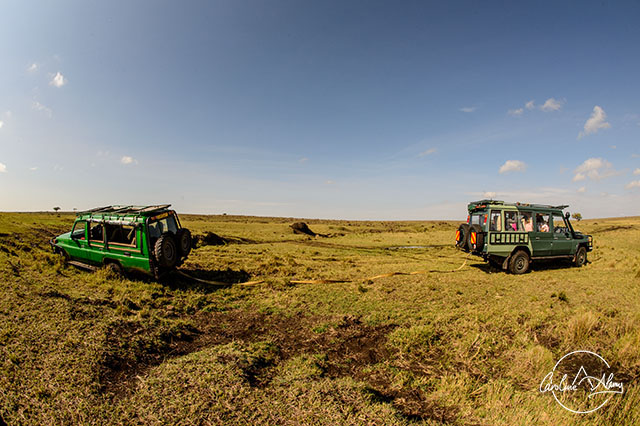
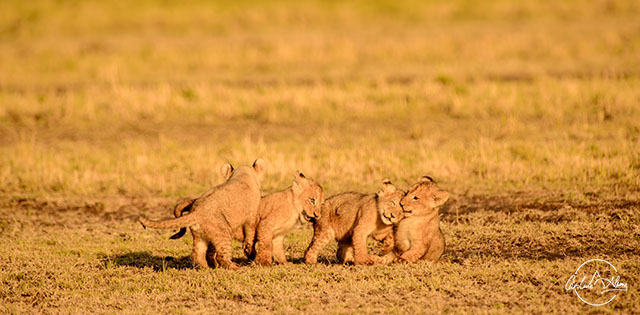
We were driving around and around, super slowly, super cautious. The wildebeests were there. Plenty of them. But no sign of Bahati.
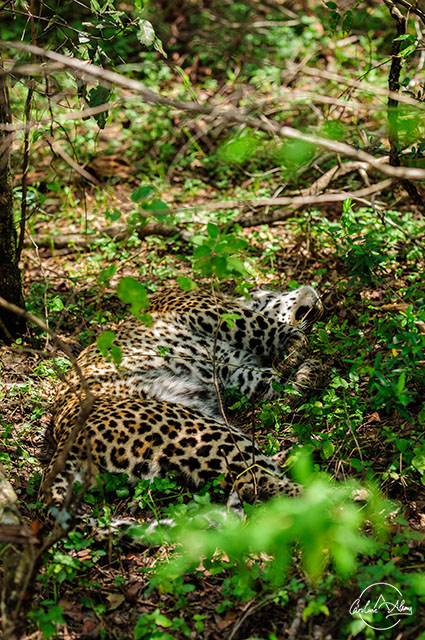
So, me, finding a leopard in the middle of the bush? No way. I am counting on Mark. And the more we drive around, the more desperate we are.
Mark braked immediately. “She is about to hunt, get ready, she is about to hunt”, he urged us.

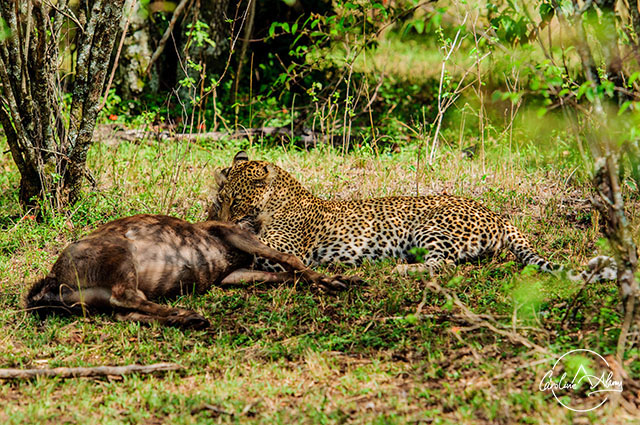



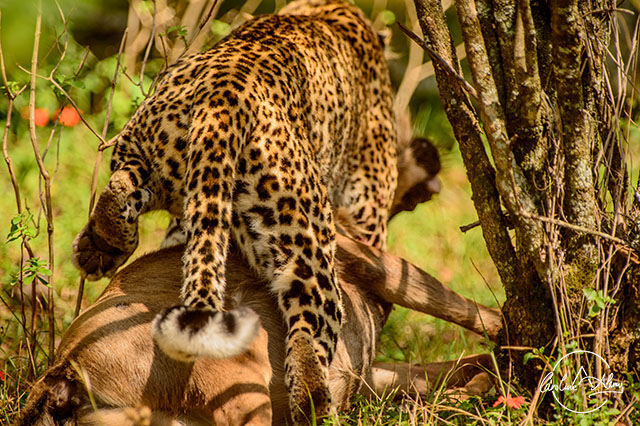
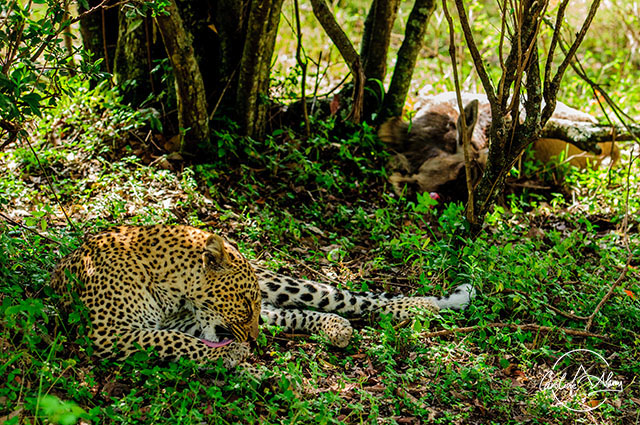
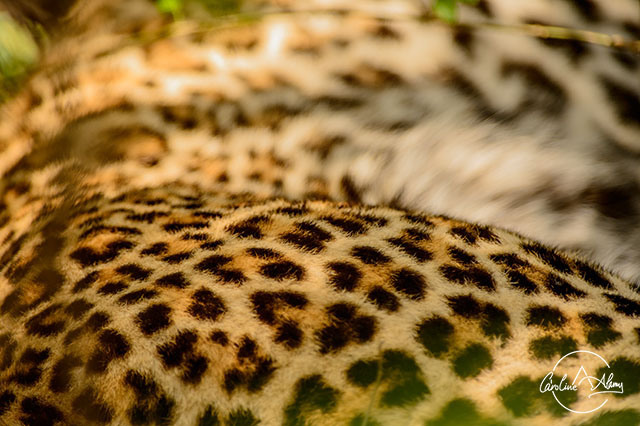
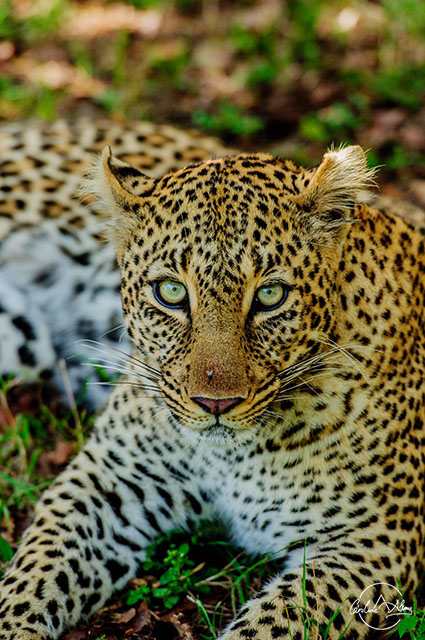
A jeep arrived. It was past 2 pm. People would start to come back. We decided to leave, happy to have lived such an intimate moment.
We learnt the next day that Bahati didn’t eat much of her kill, she let it on the ground and hyenas stole it.
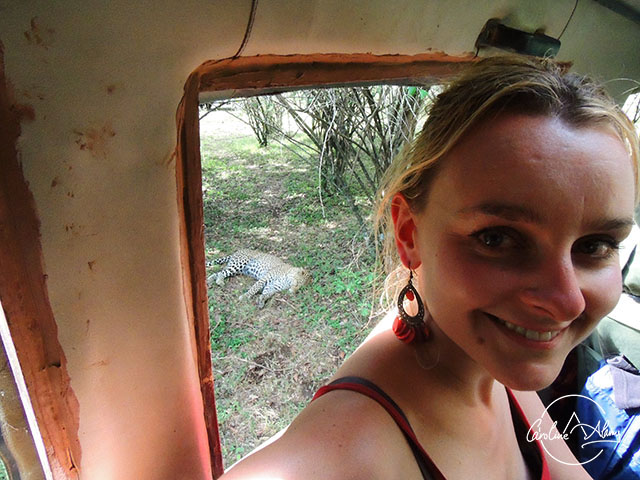
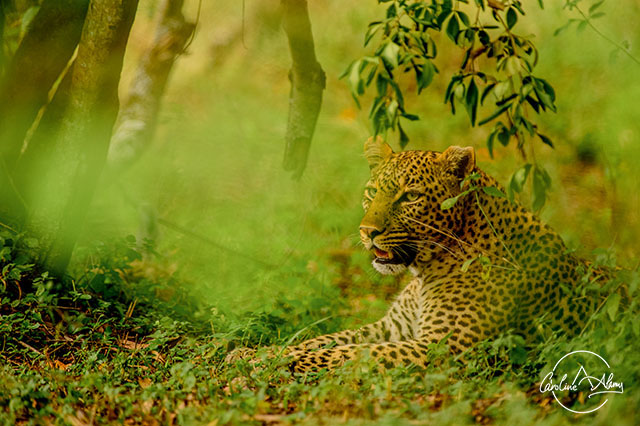
My favorite photo of this encounter with Bahati
If you want to see more pics of leopards and from safaris in Kenya, this is here.
Quick Photo Tips
It is challenging in wildlife photography, especially from a jeep, to go away from documentary shots and be artistic. When you are lucky to stay next to an animal for a few hours, it is a great opportunity to try new things once you got 1-2 shots that you like:
- Composition: The subject is surrounded by an environment which may be interesting to include in the picture. Always try to look at the entire frame you are shooting. Does everything make sense? Is something cut while it should not ? If your equipment allows it, try to have different point of view: include the landscape, then make some close ups (eyes, paws, fur, ears), portraits, etc.
- Mode: if you tend to use the Aperture, or Speed mode, try to go Manual. You have time to make experiments. See what you get when you change the speed-aperture-iso combination and the white balance. Does it look better slightly under-exposed? or over-exposed? How does it turn out if you have a warmer white balance? or a colder one?
- Observe and anticipate: Taking pics in a safari is great but what is even better is understanding your subject, the animal, its behavior. I tend to get pissed when I hear someone shooting a sleeping animal with burst mode. Observe your subject, understand what he is doing, anticipate what he will do next. Take out your eyes from the camera and just observe. You will feel when something is about to happen, you will guess by the body posture, and you will shoot at the right time…which leads to…
- Be selective: A friend of mine has a very interesting approach: he only shots pictures he would like to print and have on his wall. When you behave like that, you will be much more careful at when you shoot, how you shoot, the parameters, the framing etc. Instead of having 30 ok and similar shots; you may have one stunning picture. And you save so much time when sorting everything !
- Tripods in a jeep may be challenging, if not impossible…Bring a “bean bag” (it looks like that) with you and place it on the window, on the roof of the jeep, to help you get stability, especially if you have a heavy lens. You can easily make one at home by filling a bag with dry beans, rice, buckwheat etc.
- My parameters : Most of the pics you see on this page of Bahati in the bush are done with ISO above 1000, the widest aperture (f2.8 and f5.6) I could get and fast speed (from 1/500 to 1/1000).
Quick Travel Tips
- Your safari guide/driver is key. A good one will not only go where he heard there is a good sighting happening but, above all, he will look for the animals himself. He knows them, their habits and their behaviors; he knows how to read the footprints on the ground, his senses are super developped. He deeply enjoys searching for the animals, and he can teach you what he knows. I got amazing safari experiences. The guides I was lucky to have played a huge part. In Kenya, I highly recommend Melting Pot Safari.
- Noise, screams, can frighten animals. As much as surprised, or happy (or scared!) you are, try to refrain. Be quiet, calm, super patient. You will maximise your chance to have an interesting sighting, on top of respecting the animal.
- Depending on where you do your safari, you may experience crowd, jeeps surrounding animals and disturbing them. This is not ideal for you and even less for the animals. As much as it is tempting, don’t ask your guide to go in the way of the animal just for you to have a nice pic. Animal should be first. Let them the space they need.




0 Comments